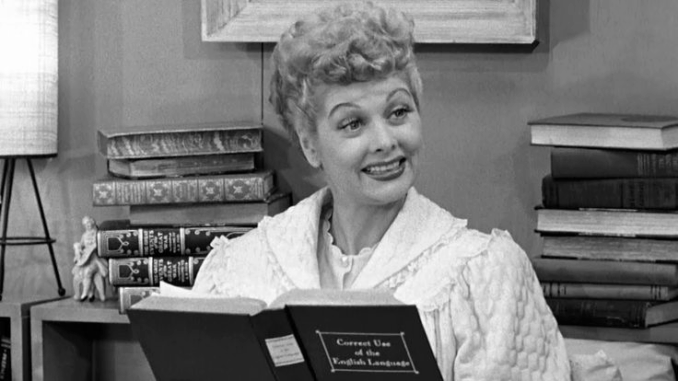
When I Love Lucy first premiered on October 15, 1951, it didn’t just become a popular sitcom—it revolutionized television itself. The show, starring Lucille Ball and Desi Arnaz, introduced innovations in production, storytelling, and representation that would go on to shape the future of TV. From its groundbreaking use of the three-camera setup to its impact on the portrayal of interracial marriage, I Love Lucy redefined the possibilities of television comedy and set a standard that many shows continue to follow today.
The Three-Camera Format
One of the most significant ways I Love Lucy changed television was through its use of the three-camera setup. Prior to this, most TV shows were filmed using a single camera, which limited the flexibility and pacing of the scenes. The three-camera method allowed for multiple angles to be captured simultaneously, which gave the show a more dynamic feel and allowed for faster, more efficient filming.
This setup not only enhanced the pacing of the comedy but also enabled I Love Lucy to be filmed in front of a live studio audience. The laughter of the audience added to the energy of the show and gave it a sense of immediacy, making it feel like a live performance. The three-camera technique became the standard for sitcoms, influencing shows like The Mary Tyler Moore Show and Friends, and continues to be used in most sitcoms today.
Innovation in Production Values
I Love Lucy was also groundbreaking in its approach to production quality. Desi Arnaz, who was not just an actor on the show but also its producer, insisted on using 35mm film for the series rather than the standard 16mm used for most TV shows at the time. This decision was made with an eye toward reruns, as 35mm film provided superior image quality that would hold up over time.
This was a forward-thinking move, as I Love Lucy became one of the first television series to be syndicated—meaning it was sold to different networks and aired in reruns. The series would go on to have a long life in syndication, and its high-quality production ensured that it would be enjoyed for decades to come.
Desi and Lucy’s Real-Life Relationship
Another groundbreaking element of I Love Lucy was its portrayal of the first interracial marriage on television. Lucille Ball and Desi Arnaz, who were married in real life, played the fictional Lucy and Ricky Ricardo. In an era when racial tensions were high and interracial marriages were not widely represented in mainstream media, their union was groundbreaking.
While some stations and advertisers initially hesitated to air the show because of its portrayal of an interracial couple, I Love Lucy defied expectations and went on to become one of the most successful TV shows of all time. Their real-life marriage brought an authenticity to their on-screen chemistry, and their comedic timing made them an unforgettable TV duo. The show’s success paved the way for more diverse portrayals of relationships and families in television.
The Rise of Syndication and Global Appeal
Before I Love Lucy, most TV shows were only aired during their original run. However, the show’s popularity led to a change in how TV shows were marketed. With the decision to film on 35mm film and use a multi-camera setup, I Love Lucy was designed for reruns. The show’s syndication strategy was revolutionary and became the model for future shows, ensuring that I Love Lucy would have a lasting impact long after it ended its original run in 1957.
The global appeal of I Love Lucy cannot be overstated. The series was not just popular in the United States; it was also embraced by audiences around the world. The relatable storylines, universal humor, and iconic characters helped I Love Lucy transcend cultural boundaries. In fact, the show has been broadcast in over 80 countries, making it one of the most internationally recognized television series of all time.
Lucille Ball as a Trailblazer for Women
Beyond the technical innovations, I Love Lucy is also remembered for its significant cultural impact. Lucille Ball broke barriers not only as a comedic actress but also as a producer. She became one of the first women to run a major TV production company, Desilu Productions, which was responsible for producing I Love Lucy and later shows like Star Trek and The Untouchables.
Ball’s ability to excel in both acting and production roles demonstrated that women could succeed behind the scenes in Hollywood, and her success helped pave the way for future generations of female filmmakers and TV producers. She became a powerful role model for women in the entertainment industry, showing that they could take control of their careers and create their own opportunities.
Conclusion
I Love Lucy was much more than a groundbreaking sitcom—it was a show that changed the way television was made, distributed, and consumed. From its use of the three-camera format and innovative production values to its portrayal of an interracial marriage, the show broke new ground in numerous ways. Lucille Ball’s impact on television extends beyond her performances, and her legacy as both an actress and a producer continues to inspire today’s creators. The lasting success of I Love Lucy is a testament to its innovation, and it remains one of the most important and influential television shows of all time.
